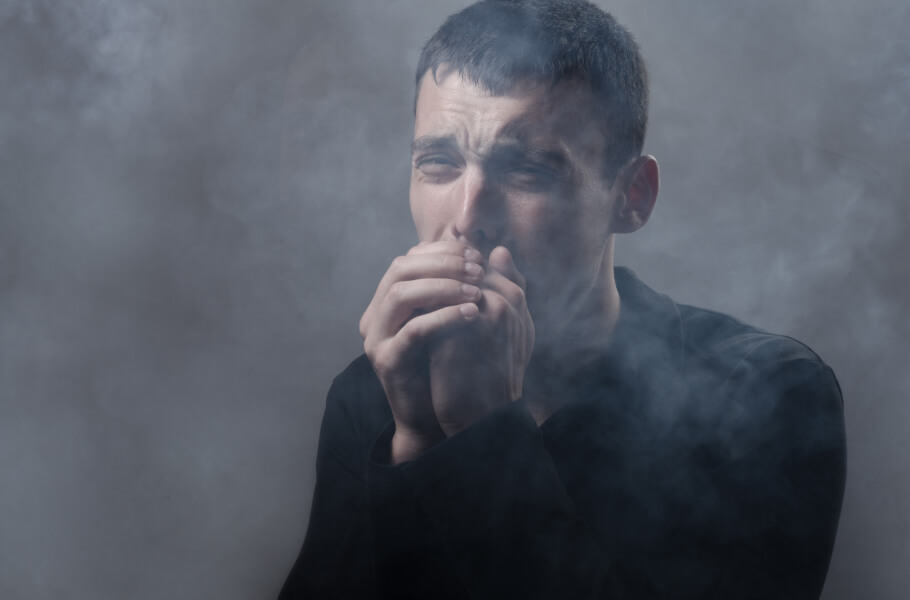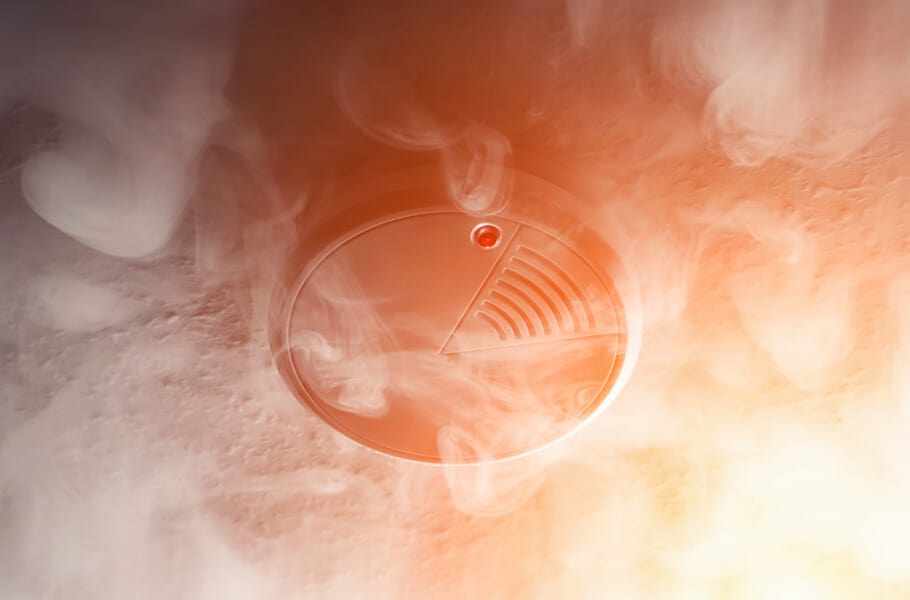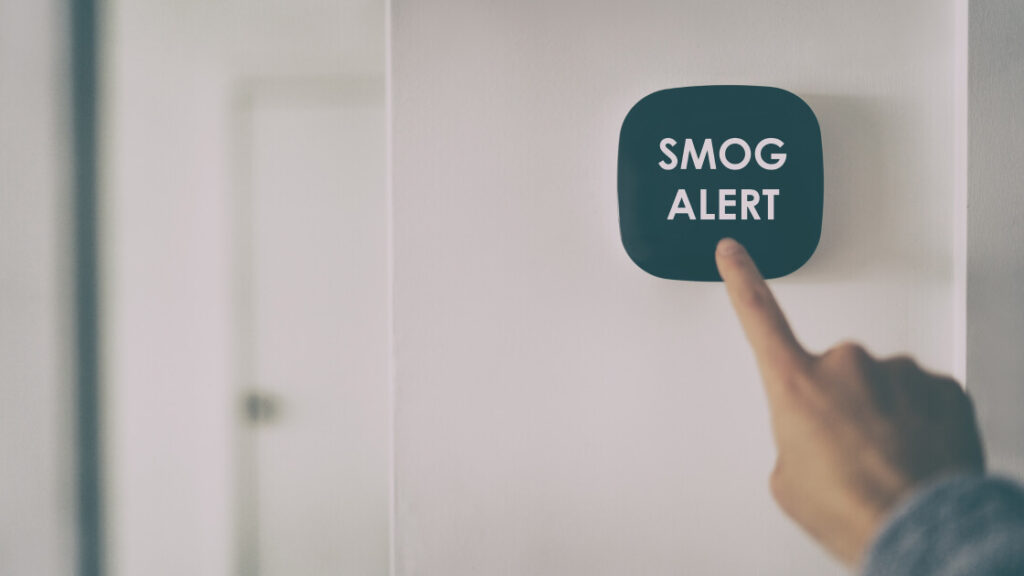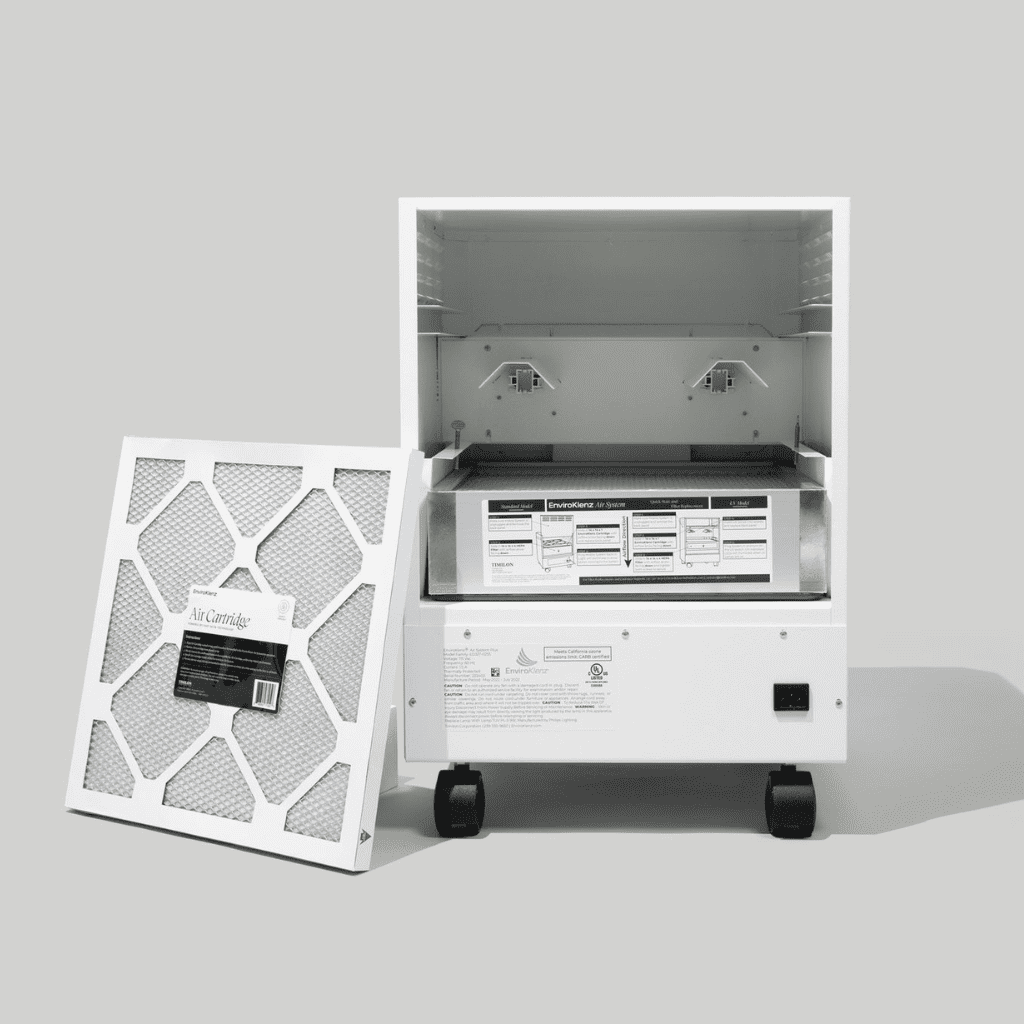Smoke, a very invasive and fast-spreading air contaminant will spread like ‘wildfire’, tainting and plaguing an entire space within seconds. Whether the smoke was created from a fire in your home’s fireplace, from a wildfire occurring outside, cigarette smoke from a smoker, or even the production of cannabis smoke from a nearby grow house, smoke will quickly take claim inside your personal indoor environment.
When it comes to large amounts of smoke inside an indoor environment, those who are exposed to this smoke can be subjected to dangerous fine particles and chemicals, hundreds or thousands that are found in smoke, that can adversely affect human health. Inhalation of this smoke can cause an array of health issues from lung irritation, allergic reactions, and even more serious conditions like heart disease and cancer in extreme cases of exposure.
The effects that smoke produces within an environment can be hazardous and has led to the development of mitigation tools in the market for consumers to be able to purchase and implement into their environment in the pursuit to eliminate the potentially toxic smoke that is in the air. Air purifiers have since been used as a mitigation tool to filter and removing smoke and the contaminants within smoke that taint your indoor air quality. However, with the vast options of air purifiers available and the different technologies each purifier uses, it will be complex to determine which air purifier and technology is the best for filtering smoke.
Below we are going to discuss the different hazardous components of this pollutant and learn more about the varying purifier technologies.
Dangers of Inhaling Smoke in the Air
The extent of most people’s knowledge on smoke inhalation dangers is that it is simply dangerous to your health, point blank. But how harmful is smoke really, especially when inhaled into the human body? The health risks vary depending on the individual, as some individuals are more prone to adverse health effects from smoke exposure such as children, older adults, or someone with respiratory conditions like asthma.
When smoke is temporary in your environment, such as a wildfire, the effects can be less severe, as opposed to smoke that occurs from a regular source like secondhand smoke from a neighbor. The more exposure you have to smoke, the higher the risk that is presented in your personal indoor environment, therefore it is important to stay ahead and take action when there is a constant source of smoke nearby.
Smoke, as we discussed earlier, contains a large quantity of chemicals within its construction, some that are significantly hazardous. The National Institute of Health (NIH) stated that there are at least 250 harmful chemicals in just tobacco smoke alone, and within these chemicals 60 of them are labeled as a carcinogen, such as arsenic, benzene, and formaldehyde.

Understanding What Smoke Is Composed Of
In an effort to understand the dangerous hazards of smoke, we are going to break down what exactly smoke is and what is found in the composition of smoke. Smoke is a collection of tiny solid, liquid, and gas particles, that contain hundreds of different chemicals and fumes, but the visible smoke that you see is primarily carbon (soot), tar, oils, and ash.
Depending on the type of smoke and where it comes from such as a wildfire, cigarette smoke, or cannabis smoke, they can each contain a different construction of chemicals and contaminants. For example, experts say that cigarette smoke contains over 4,000 different compounds – with carbon monoxide, tar, and nicotine as the most abundant compounds produced within cigarette smoke.
In comparison to cigarette smoke, wildfire smoke is composed of gases, water vapor, and microscopic particles – along with other compounds like carbon monoxide, carbon dioxide, nitrogen oxide, irritant VOCs, and air toxics. The fine particles that are produced in this type of smoke is a component of smoke that can be significantly hazardous to human health.
Hazardous Particle Size of Smoke in the Air
The particle size of mainstream tobacco and cannabis smoke can range in size, but overall these sizes can be quite hazardous if inhaled by humans. According to research conducted, it was found that the size of smoke particles ranges from 0.3 microns to 0.5 microns in size, with a few particles found to be smaller than 0.1 microns in size.
When ultra-fine particles are present in the air you are breathing, these small particles will become ingested into the human body and pass deep into the recesses of the lungs and eventually into the bloodstream. As the particles reach the bloodstream it will directly flow to the organs of your body and will potentially affect these major organs significantly.
Situations of Smoke Exposure in Your Indoor Environment
Smoke can enter into your personal indoor environment, sometimes way too easily – depending on the conditions outside your home. Whether it is from a roaring wildfire, secondhand cigarette smoke from a neighbor, or even from cannabis smoke from a grow house, smoke will enter into your indoor space and inundate the environment’s air with its contaminants.
What are the effects of smoke exposure depending on the situation at hand, and what should you do in each circumstance to reduce exposure?

Wildfire Smoke
Wildfires are becoming a more relevant issue for homeowners, as the past few wildfire seasons have raged aggressively through most of the western United States, with homes burned down and the air quality impacted for months following the fire. If you live in an area that has been affected by wildfires in the past, then you are aware of the strength of these natural disasters and the dramatic effect they can have on your home’s indoor air quality.
Wildfires create a toxic plume of smoke that can spread far and wide into the air. The chemicals and fine particulate matter that wildfires produce in the air are of significant concern to public health. They can elicit health symptoms similar to that of allergies, which is labeled wood smoke allergies. If you start to experience health symptoms and poor indoor air quality in your home from intruding smoke inside the area, you will want to consider using an effective HVAC filter for smoke elimination, and even an air purifier to help mitigate the smoke particles and odors in the air.
Cigarette Smoke
Exposure to cigarette smoke usually occurs from something called secondhand smoke. Secondhand smoke is smoke that is produced from burning tobacco (cigarettes, cigars, or pipes) that has been exhaled or breathed out by a person smoking. Tobacco smoke in total contains more than 7,000 chemicals, including hundreds of chemicals that are toxic – nearly 70 chemicals that can potentially cause cancer.
When children and adults are exposed to secondhand smoke, the only way to fully protect yourself is to eliminate smoking within and around your personal environment. Sometimes, however, this can be a challenge, as others around you expose you to smoke in the environment – whether it be a neighbor or a family member who is emitting the smoke into the air. If you are having an issue with tobacco smoke intrusion inside your indoor environment, you may need to implement smoke mitigation tools such as a smoke filter for your HVAC and an air purifier for smoke, particulate, chemical, and odor elimination.
Cannabis/ Weed Exposure
If you have ever been exposed to the smell of cannabis before, whether it be from exposure to a grow house or grow room, from recreational Cannabis Smokesmoking, or even from outside exposure that has lingered its way into your personal indoor environment – the odors produced from cannabis can be severely potent. Depending on the strains of marijuana, the odor that is produced from the cannabis leaf can vary, leaving some strains to stink up your whole area with a strong skunk-like odor.
The concentration of cannabis odor and smoke is very similar and often compared to that of skunk spray, but in reality, this odor stems from a chemical compound found within the cannabis strain(s) called terpenes and terpenoids. These chemicals are produced and become released off the cannabis plant when smoked and will begin to travel throughout your air and contaminating the entire air space.
If you, someone you live with, or an outside intrusion brings cannabis smoke odor inside your personal indoor environment, it will be necessary to utilize an efficient cannabis odor eliminating air purifier and HVAC filter to remediate the environment and eliminate the cannabis chemical odor.
How Air Purifiers Work Against Wildfire, Tobacco, & Cannabis Smoke
Now that you understand exactly what smoke is and the dangers it can present to your environment and human health if exposure occurs – it is time to learn about the best mitigation tool for smoke, an air purifier. An air purifier or filter for smoke – whether it be wildfire, tobacco, or cannabis smoke, will be able to address both particles and gases to be bestowed the title of best air purifier for smoke. Typically, air purifiers are designed with only one technology, and either this technology has the ability to filter particulates or gas, so finding a purifier that accomplished both particle and gas filtration is considered a ‘unicorn’ air purifier.
Below we are going to discuss the top three air purifier technologies that could be used for smoke – Carbon. PECO, and HEPA technologies. It is important to clearly understand how each of these technologies works before purchasing an air purifier for your specific smoke intrusion in your person indoor air.
Carbon
Carbon is one of the most popular air purifier technologies for smoke, as they were once labeled as top performing technology for air purifiers. Carbon filters were designed to remove gases and odors, although they have a hard to of accomplishing just this within their technology. These are primarily useful for organic compounds and VOCs.
The major problems associated with carbon, is firstly, they can quickly become saturated and therefore it will require you to replace this very frequently. If the carbon is saturated and is not changed quickly, then toxic gases will begin to become released from the filter and back into the air. This will especially be problematic when you are dealing with heavy quantities of smoke, as it will be unable to effectively mitigate all of these smoke pollutants, particles, and odors.
HEPA
One of the best air purifier technologies for particle removal, HEPAs can remove particles based on size. Typically, HEPA filters will capture particulate matter larger than 0.3 microns in size with a 99.97% efficiency. This does a great job in environments where there are high quantities of particulates, such as following smoke from a wildfire or cigarette. However, this does mean that any particles that fall under the range smaller than 0.3 microns, will be susceptible to release into your air even after filtration has occurred.
HEPAs, although excellent with particulate removal, they will lack the ability to remove gaseous pollutants like carcinogenic VOCs. Therefore, if you are looking to purchase an air purifier for smoke removal, be sure to find a purifier that uses a combination of HEPA filtration and VOC elimination within the air system.
PECO
The PECO technology is an air purification technology that claims to both eliminate the dangerous VOCs along with the particulates from smoke in the air. This technology uses a process called Photo Electrochemical Oxidation that is elicited by light that enables a catalytic oxidation reaction. When this reaction occurs, it will release chemicals and byproducts into the environment, contributing to contamination within the air and acting counterproductively. The PECO technology also was tested and proven ineffective against organic and inorganic molecules including halogen, sulfur, phosphorous, etc.
Conclusion: Identifying the Best Air Purifier for Smoke
Ultimately, the decision is yours when deciding what air purifier is the best for your environment’s smoke situation, whether it is a wildfire, cigarette smoke, or cannabis smoke in the air. Comparing the air purification technologies, and what they focus on removing will help you to distinguish what technology meets your environment’s needs and what will overall be the most lucrative in your home to improve the indoor air quality.









